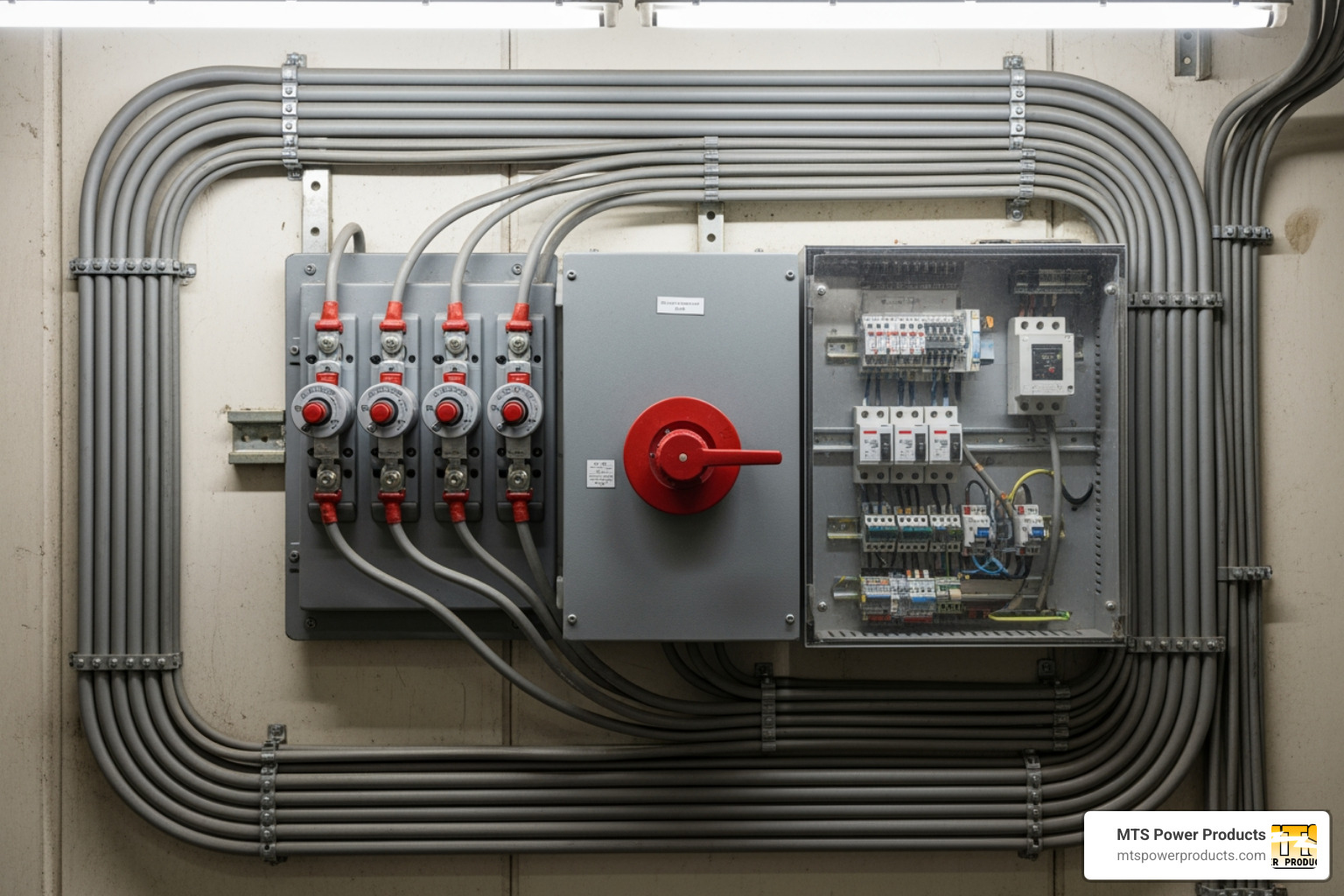
Buy Direct
from the Manufacturer
Sell our Products
Become a Distributor
Discounts
on volume purchases
Visit Us
at our Miami office
from the Manufacturer
Become a Distributor
on volume purchases
at our Miami office
How does a generator automatic transfer switch work to keep your lights on when the power grid fails? Here’s the simple answer:
Quick Answer: How an Automatic Transfer Switch Works
When Hurricane Ian knocked out power across Florida, families with automatic transfer switches barely noticed. Their generators kicked in automatically, keeping refrigerators, AC, and medical devices running.
The beauty of an ATS is its seamless, hands-free operation. It ensures your critical loads stay powered whether you’re home or away. This automatic process also provides crucial safety, preventing dangerous backfeeding that can electrocute utility workers. It protects your generator and home electronics from damage caused by improper connections or the sudden return of utility power.
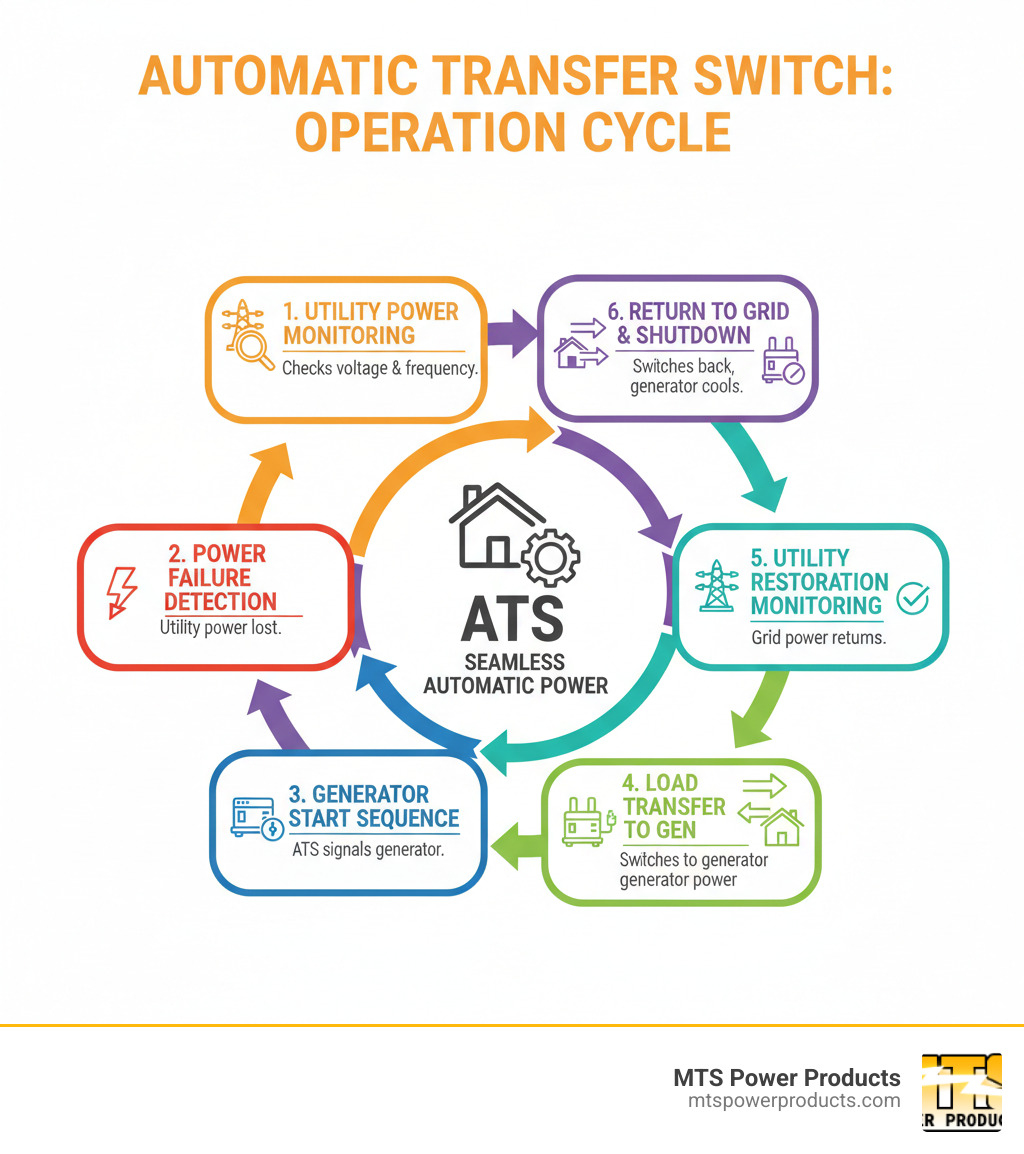
Related content about how does a generator automatic transfer switch work:
An automatic transfer switch (ATS) is the smart brain connecting your home’s electrical system, the utility grid, and your backup generator. It acts as an intelligent traffic controller for your electricity. When it detects an outage, it automatically starts your generator and transfers your home’s power supply, often within 30 seconds. When grid power returns, it reverses the process. This happens automatically, ensuring you have power without lifting a finger.
But an ATS is more than a convenience; it’s essential for safety and required by electrical codes. Without one, connecting a generator is dangerous for you and utility workers. For detailed information, check out our Helpful Info on Generator Transfer Switch Options.
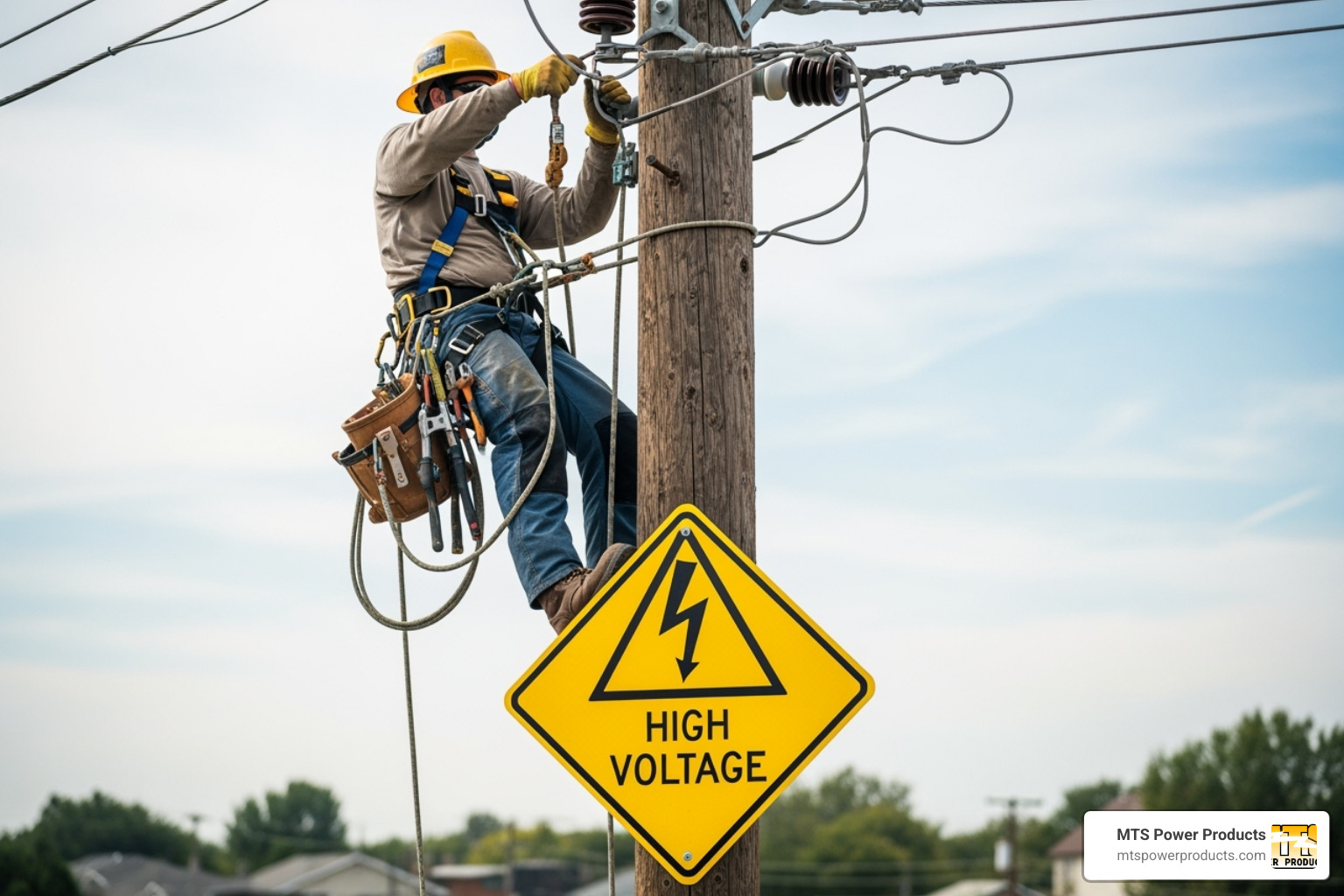
Connecting a generator without a proper transfer switch can be lethal. When generator power feeds back into the utility grid—a dangerous situation called “backfeeding”—it can electrocute utility workers who believe a line is dead. The National Electrical Code (NEC) requires transfer switches for all permanent generator installations to prevent this.
An ATS acts as a safety barrier by isolating power sources. It physically prevents your generator and utility power from ever connecting at the same time. This break-before-make design protects workers, your home’s electrical system, and your appliances from damage. It also prevents a sudden return of utility power from destroying your generator, a risk that could also void your homeowner’s insurance.
Beyond safety, the convenience of an ATS is a true game-changer. Hands-free operation means no more fumbling in the dark to manually start a generator. This is ideal for families who may not be home when an outage occurs, as it keeps critical loads—refrigerators, medical equipment, and security systems—running without interruption.
Modern ATS units also offer remote monitoring capabilities, allowing you to check your system’s status from your smartphone. This provides peace of mind, especially when you’re away, and helps protect sensitive electronics from sudden power cuts. For any home or business with critical power needs, an ATS is essential for maintaining normal operations.
An ATS is a vigilant guardian for your electrical system, performing sophisticated power monitoring around the clock. Using a microprocessor, it constantly checks the voltage and frequency of your utility power. This self-acting process, once configured, operates independently to keep your power flowing.
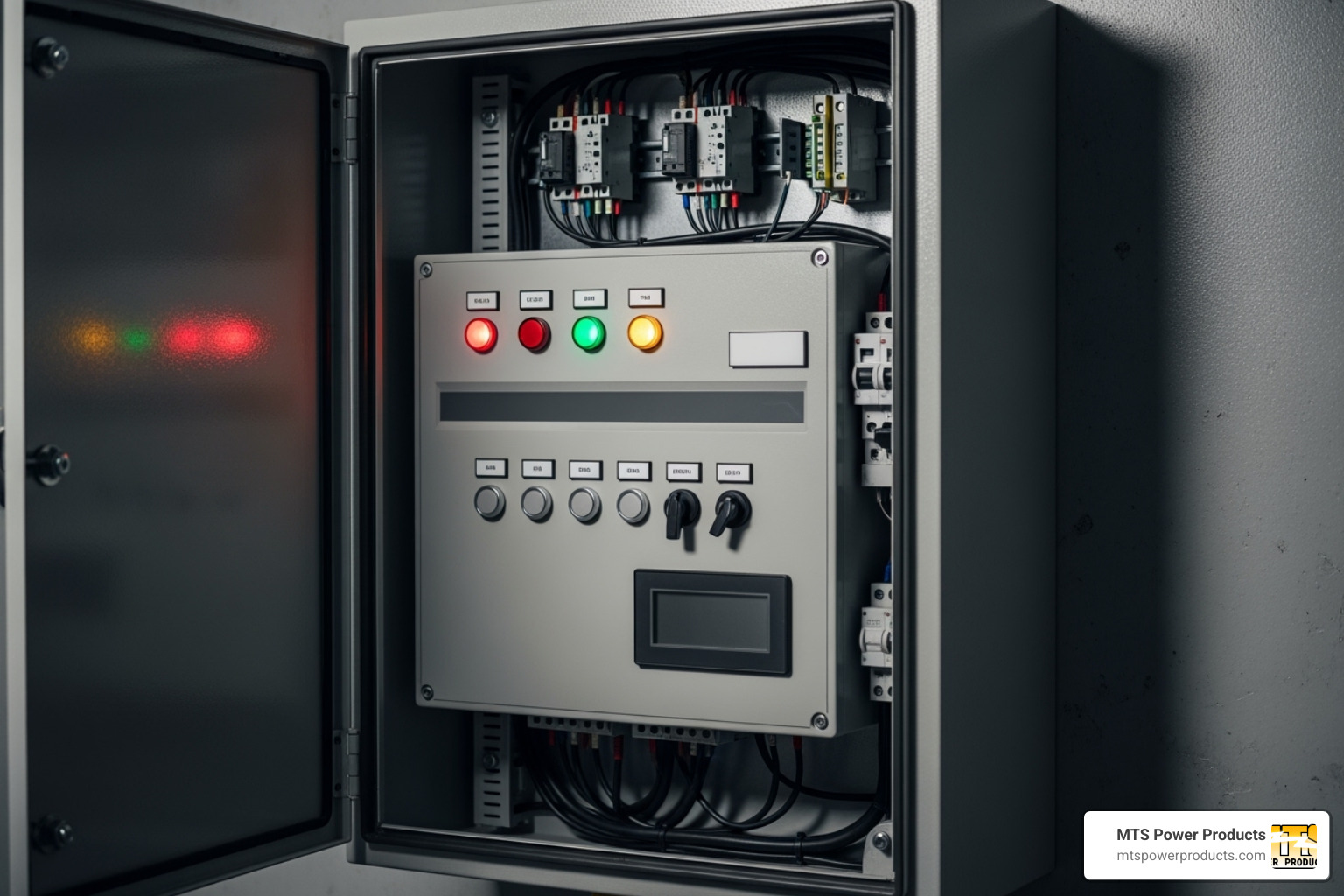
Our advanced ATS units feature programmable displays and robust switch mechanisms that provide complete visibility and control. The sequence of events happens so smoothly that you might not even notice it. For a closer look at our solutions, explore our Automatic Transfer Switch for Generator products. For comparison, explore competitor products such as Generac Smart Switches, Kohler Transfer Switches, and Eaton Home Standby ATS.
Here’s the step-by-step process your ATS follows during a power failure:
When utility power is restored, your ATS confirms it is stable before switching back.
An ATS is a sophisticated device with several key components working in concert to manage your power.
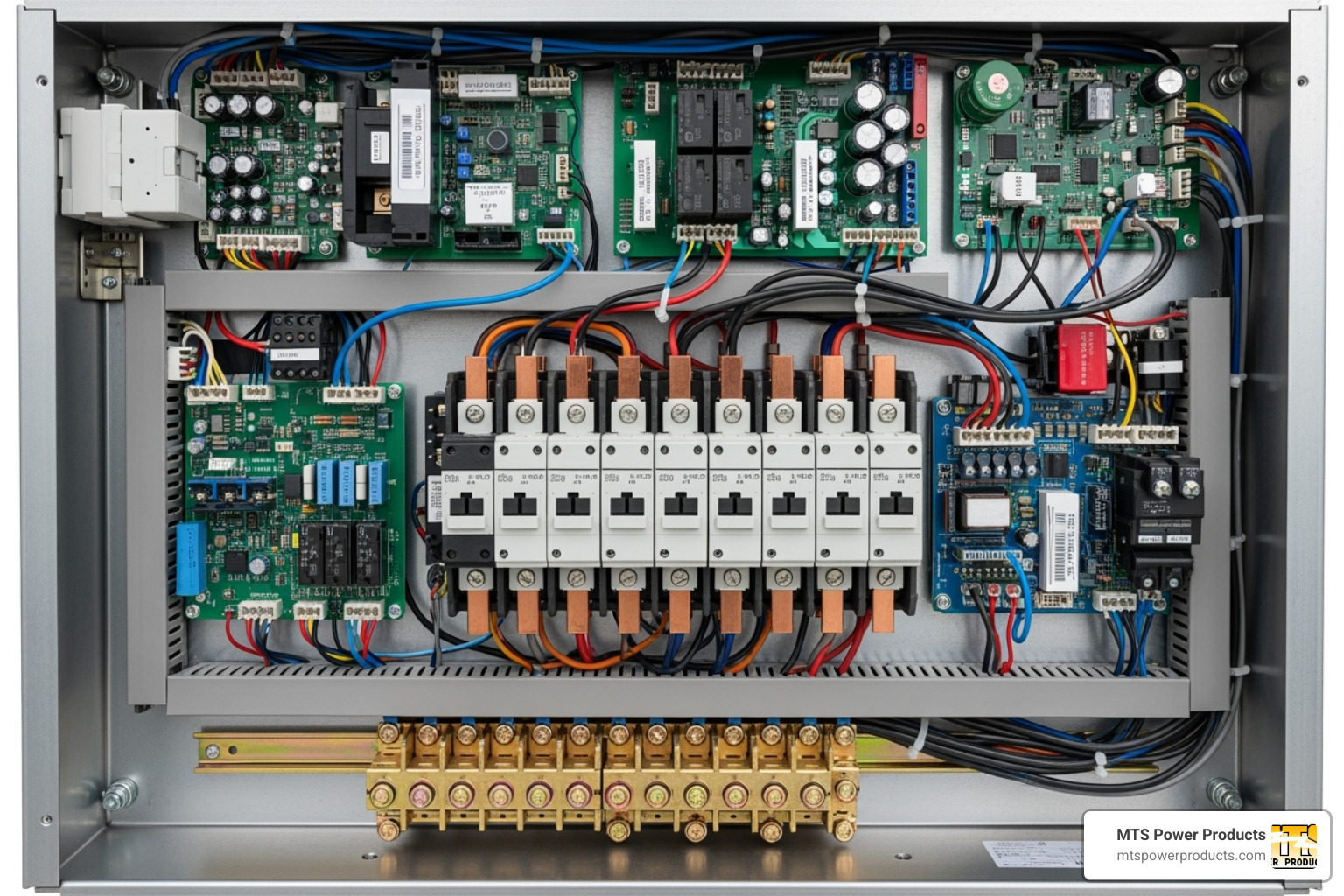
Control Logic (Microprocessor): This is the brain of the ATS. It monitors power levels, controls timing delays, and sends start/stop signals to the generator. Our McPherson Controls line features advanced microprocessors with programmable displays for customized control. You can explore our full range of ATS Controllers to see how advanced these systems have become.
Switching Mechanism: This is the muscle that physically moves the electrical connections between power sources. Depending on the ATS, this could be contactors, molded case circuit breakers, or heavy-duty power frame breakers. Its reliability is critical for uninterrupted power.
Sensors for Voltage and Frequency: These sensors constantly monitor both utility and generator power output. They detect fluctuations that trigger the transfer sequence, making the “automatic” in ATS possible.
Enclosure: This protective metal box shields the internal components from dust, moisture, and damage, ensuring reliable operation for years. It’s engineered for safety and easy maintenance access.
Terminal Lugs: These are the robust connection points where utility, generator, and load wires are safely terminated. They are built to handle significant electrical current reliably.
Status Indicators: These lights and digital displays provide at-a-glance information, showing whether you’re on utility or generator power and indicating if there are any system issues.
Comparable component designs can be found in leading brands like ASCO Power ATS, ABB Zenith ATS, and Caterpillar Cat ATS.
Not all Automatic Transfer Switches are the same. How does a generator automatic transfer switch work in a home differs from its function in a hospital, so it’s important to choose the right switch for your specific needs.
Whether you’re protecting a home or a manufacturing plant, the key is matching the ATS to your priorities. Do you need a cost-effective solution, or is uninterrupted power so critical that even a millisecond of downtime is unacceptable? Our Generator Transfer Switch Complete Guide can help you decide. You may also want to review offerings from Generac, Kohler, Eaton, and ASCO Power to compare features and pricing.
A manual transfer switch (MTS) requires you to do all the work, while an ATS handles everything for you. The choice comes down to cost versus convenience and speed.
| Feature | Manual Transfer Switch (MTS) | Automatic Transfer Switch (ATS) |
|---|---|---|
| Cost | Generally less expensive | Higher initial investment |
| Convenience | Requires manual intervention: start generator, connect, flip switch | Fully automated: detects outage, starts generator, transfers load, monitors utility, switches back, shuts down generator |
| Speed of Transfer | Dependent on human action; can take several minutes | Fast: transfer typically within 10-30 seconds after outage detection |
| User Intervention | High: user must be present and actively manage the transfer | None during operation: ideal for times you’re away or asleep |
| Safety Features | Prevents backfeeding but relies on correct manual operation | Actively prevents backfeeding; integrated safety logic ensures proper sequencing |
| Best For | Budget-conscious users, situations where brief power interruptions are tolerable | Critical applications (medical devices, data centers), businesses, and homes where continuous power is essential or for users seeking maximum peace of mind. |
If you’re always home during outages and don’t mind the manual process, an MTS can save money. But for true peace of mind, automation is worth the investment. Popular examples: Reliance Controls manual transfer switches and Briggs & Stratton ATS.
The way an ATS switches between power sources is a key differentiator.
Open Transition switches use a “break-before-make” method, disconnecting from one source before connecting to the other. This creates a brief flicker in power (less than a second) that is acceptable for most homes and businesses.
Closed Transition switches are for facilities where no power loss is acceptable, like hospitals or data centers. They use a “make-before-break” method, momentarily connecting to both sources to ensure a seamless transfer with zero interruption.
Delayed Transition switches add a pause between disconnecting and connecting. This is useful for large inductive loads like motors, as it allows residual voltages to dissipate before the new source is connected, preventing equipment damage.
For closed- and delayed-transition options, see ASCO Closed Transition ATS, ABB Zenith ATS, and Cat Transfer Switches.
The physical switching components vary by power needs and budget.
Beyond the standard Utility-Generator setup, switches can be configured for more complex needs, such as Utility-Utility for switching between two grid feeds or Generator-Generator to allow for backup generator maintenance.
Understanding how does a generator automatic transfer switch work is only half the battle; proper installation and care are just as critical.
Professional installation by a licensed electrician is non-negotiable. Working with high-voltage systems is dangerous and can lead to electrocution, fire, or equipment damage. Improper installation will also void warranties and may violate local building codes and insurance policies. An electrician will ensure all permit and inspection requirements are met.
Sizing your ATS correctly is also crucial. An electrician will help you calculate your total electrical load by adding up the power requirements of all circuits you want to back up. A common rule of thumb, especially in areas like South Florida, is to size the switch for 150% to 200% of your calculated load. This safety margin prevents overloading and provides flexibility for future additions.
Regular maintenance ensures your ATS is ready when you need it. Think of it as insurance for your backup power system.
Modern technology has led to ‘Smart’ or Universal Transfer Switches (UTS) that offer superior control and efficiency. These intelligent units can automatically manage your electrical loads during an outage. For example, a UTS might prioritize your refrigerator and security system while temporarily shedding non-essential loads like a pool pump. This smart load management allows a smaller generator to power more of your home, saving fuel and extending run times.
Our Cummins RA Series ATS and McPherson Controls line exemplify these advanced capabilities, featuring remote monitoring and programmable load management for complete control over your backup power. Comparable load-management solutions include Generac Smart Management Modules and Kohler Load Control Modules.
Let’s clear up the most common questions about how does a generator automatic transfer switch work in the real world.
Typically, power is restored in 10 to 30 seconds. This brief delay is intentional and protective. While the ATS detects the outage instantly, it must wait for the generator to start and stabilize its voltage and frequency. This ensures that clean, steady power is sent to your sensitive electronics, preventing damage from fluctuations. The actual electrical transfer itself takes less than a second.
Yes, absolutely. The National Electrical Code (NEC) mandates a transfer switch for any permanently installed generator. This is not red tape; it’s a critical safety law to prevent backfeeding—a dangerous situation where your generator sends electricity back to the grid, which can electrocute utility workers. Local building codes and even your homeowner’s insurance policy also require a properly installed transfer switch. It’s essential for safety, compliance, and liability.
No. Installing an ATS is not a DIY project. We cannot stress this enough. This is high-voltage electrical work that poses a serious risk of electrocution, fire, and equipment damage. One wrong wire could be disastrous.
A qualified, licensed electrician is required to perform the installation safely and correctly. They understand the complex wiring, local codes, and permit/inspection processes. Attempting to do it yourself will void equipment warranties and could create major insurance and liability issues. The cost of professional installation is a small price to pay for the safety of your family and property.
Understanding how does a generator automatic transfer switch work is the first step toward securing reliable backup power. An ATS provides essential safety, reliability, and convenience for your home or business.
At MTS Power Products, we are South Florida’s trusted manufacturer and direct provider of generator sets, parts, and automatic transfer switches. Based in Miami, we offer professional-quality equipment without the middleman markup. Our location near Miami’s airport and port allows us to provide worldwide delivery with the service of a local company.
Our exclusive McPherson Controls line features advanced, programmable controls for superior safety and performance, including remote monitoring capabilities. We specialize in custom power solutions custom to your specific needs and budget.
Ready to protect what matters most? Ensure your property is always protected by exploring our range of Generator Automatic Transfer Switch options. Our team is here to help you find the perfect system for years of reliable service.
